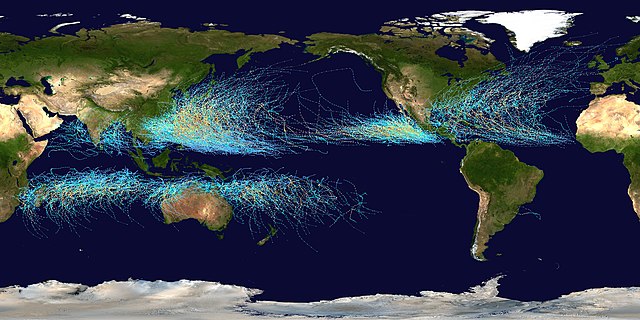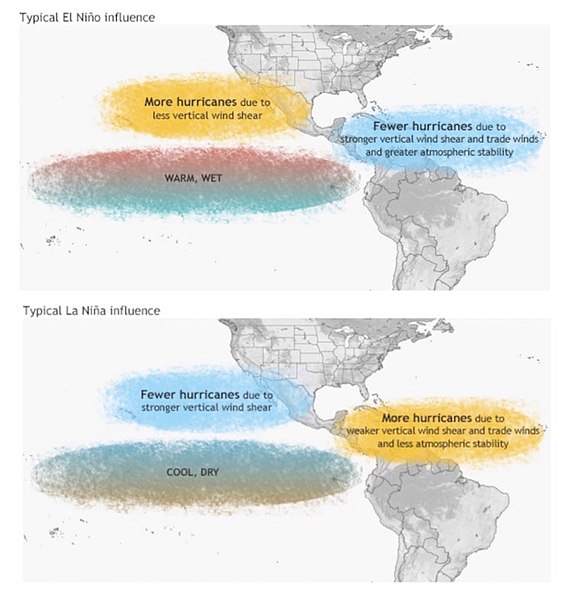Sea surface temperature (SST), or ocean surface temperature, is the ocean temperature close to the surface. The exact meaning of surface varies in the literature and in practice. It is usually between 1 millimetre (0.04 in) and 20 metres (70 ft) below the sea surface. Sea surface temperatures greatly modify air masses in the Earth's atmosphere within a short distance of the shore. Local areas of heavy snow can form in bands downwind of warm water bodies within an otherwise cold air mass. Warm sea surface temperatures can develop and strengthen cyclones over the ocean. Tropical cyclones can also cause a cool wake. This is due to turbulent mixing of the upper 30 metres (100 ft) of the ocean. Sea surface temperature changes during the day. This is like the air above it, but to a lesser degree. There is less variation in sea surface temperature on breezy days than on calm days. The thermohaline circulation has a major impact on average sea surface temperature throughout most of the world's oceans.

The 1997 El Niño observed by TOPEX/Poseidon. The white areas off the tropical coasts of South and North America indicate the pool of warm water.
Temperature profile of the surface layer of the ocean (a) at night and (b) during the day
Sea-effect snow bands near the Korean Peninsula
Tropical cyclogenesis is the development and strengthening of a tropical cyclone in the atmosphere. The mechanisms through which tropical cyclogenesis occurs are distinctly different from those through which temperate cyclogenesis occurs. Tropical cyclogenesis involves the development of a warm-core cyclone, due to significant convection in a favorable atmospheric environment.
Global tropical cyclone tracks between 1985 and 2005, indicating the areas where tropical cyclones usually develop
Schematic representation of flow around a low-pressure area (in this case, Hurricane Isabel) in the Northern hemisphere. The pressure gradient force is represented by blue arrows, the Coriolis acceleration (always perpendicular to the velocity) by red arrows
Hurricane Pablo formed in the extreme northeastern Atlantic during the 2019 season.
ENSO effects on hurricanes distribution.







